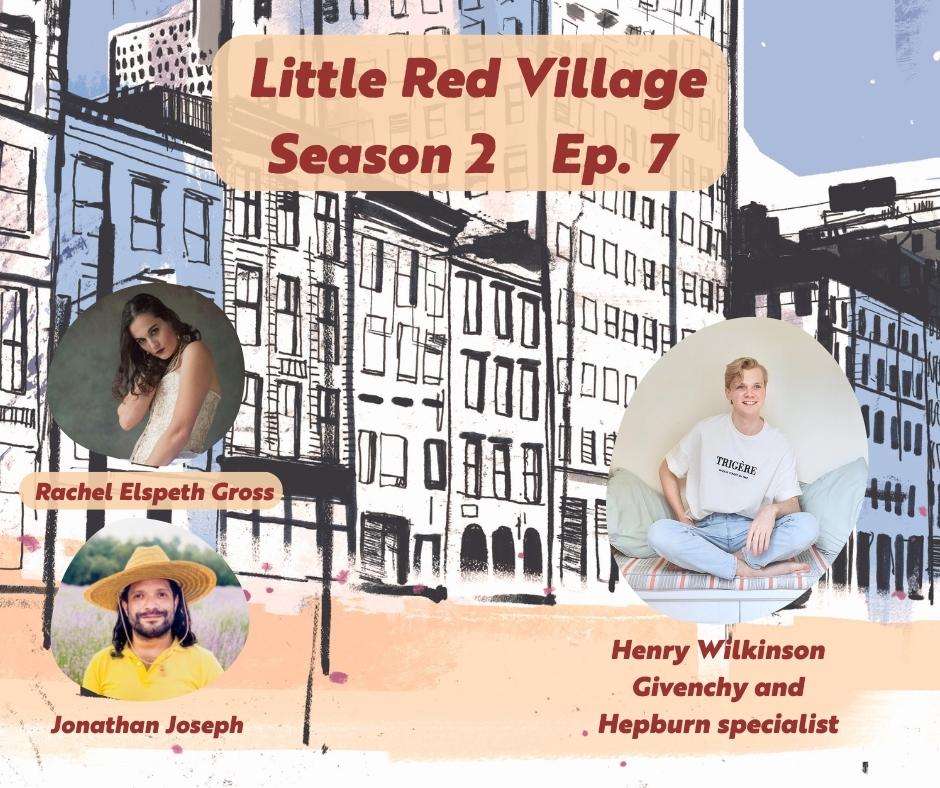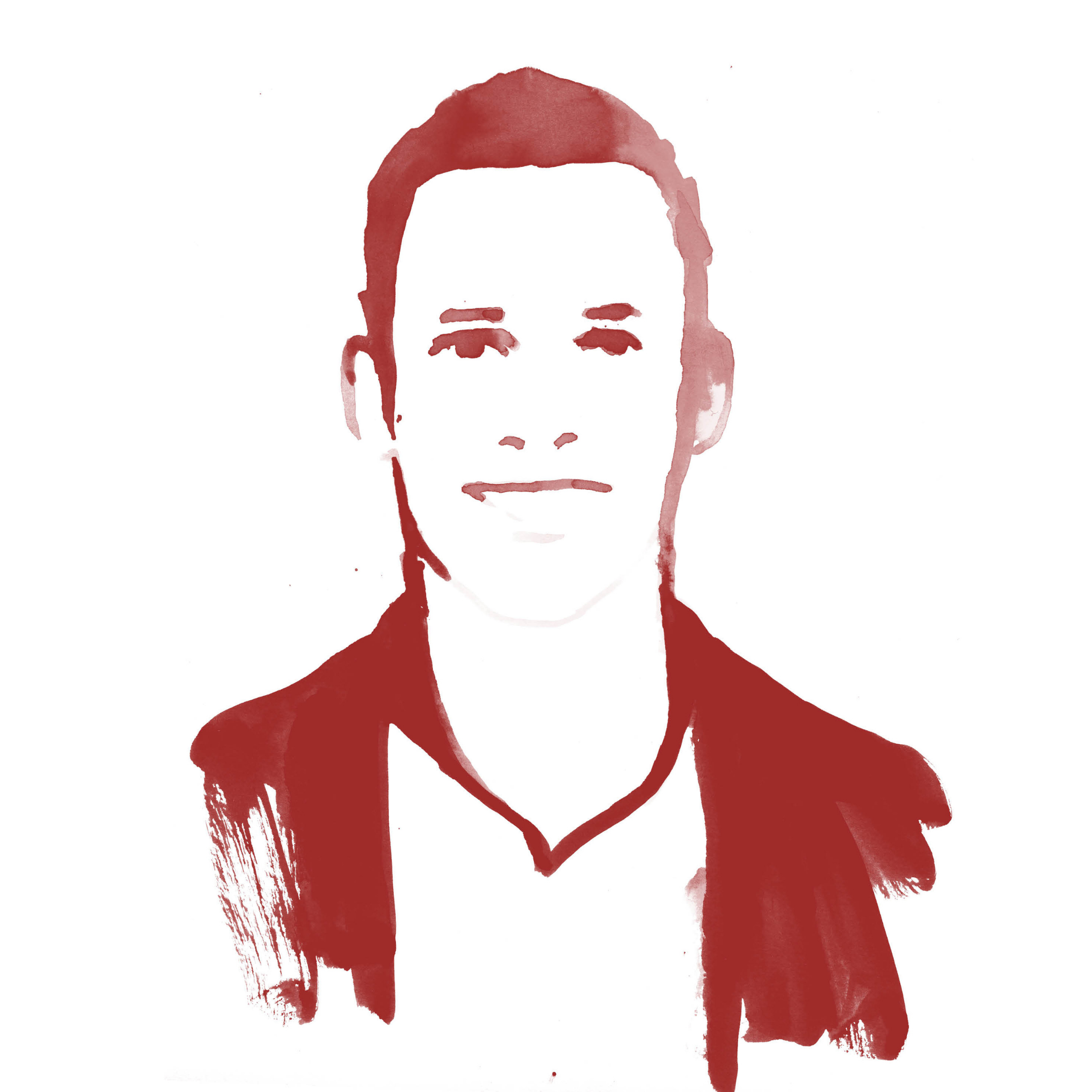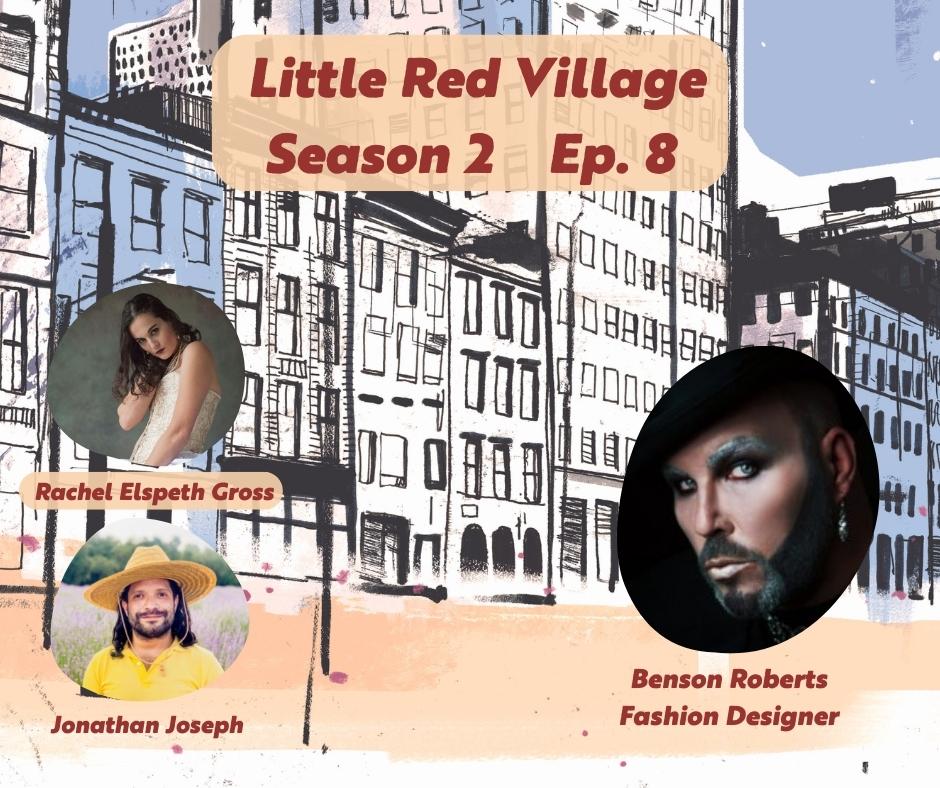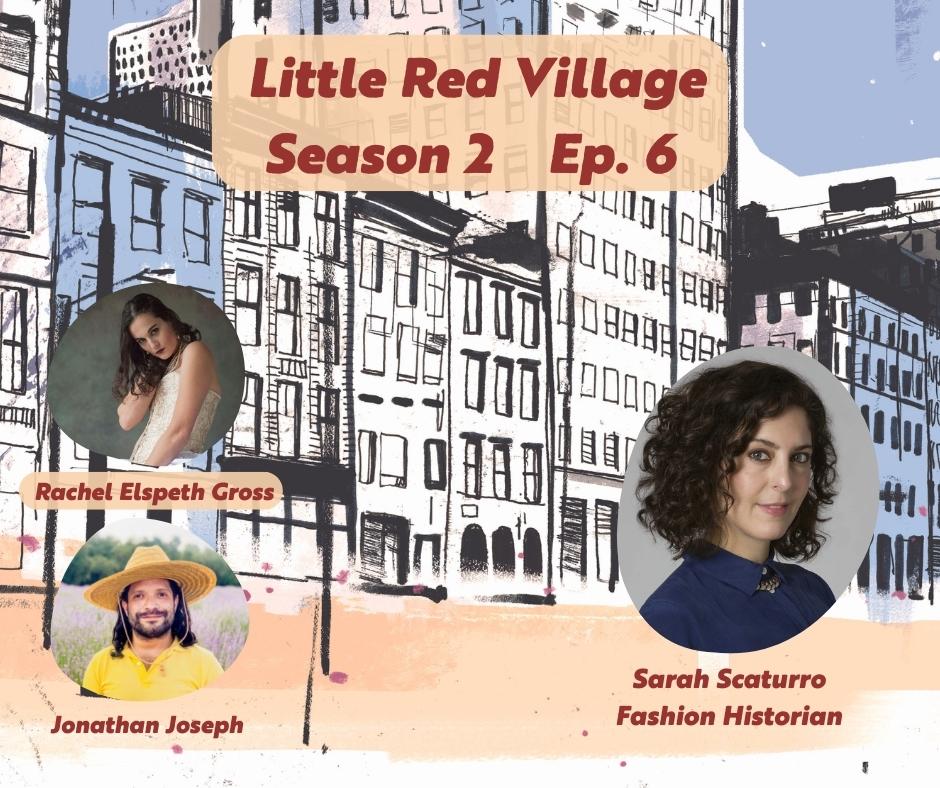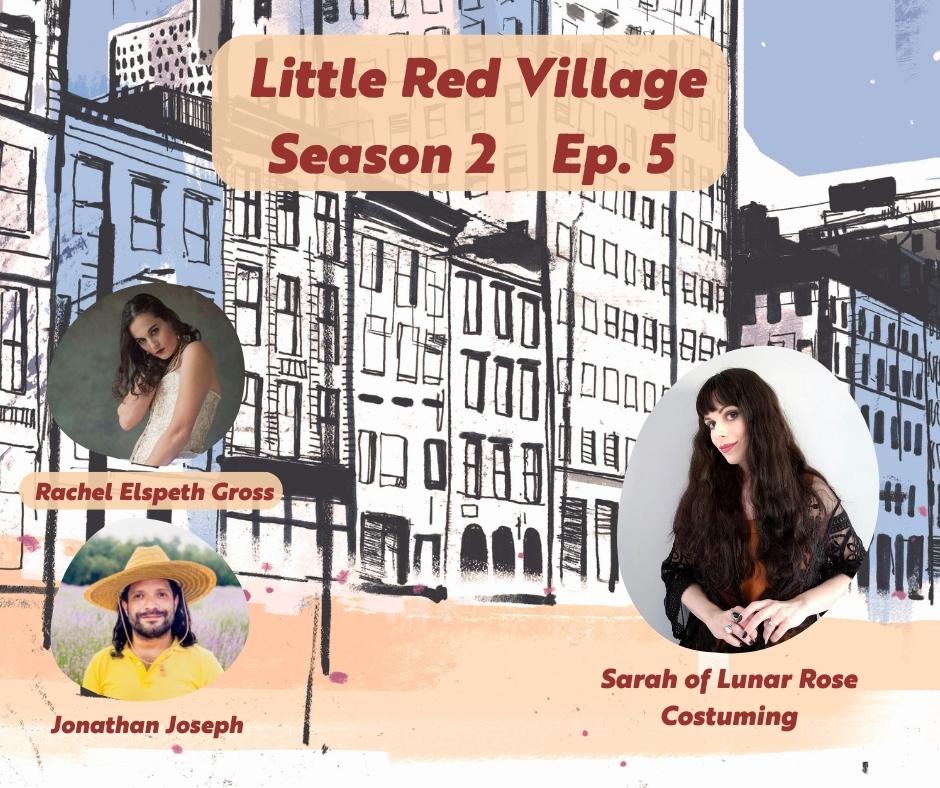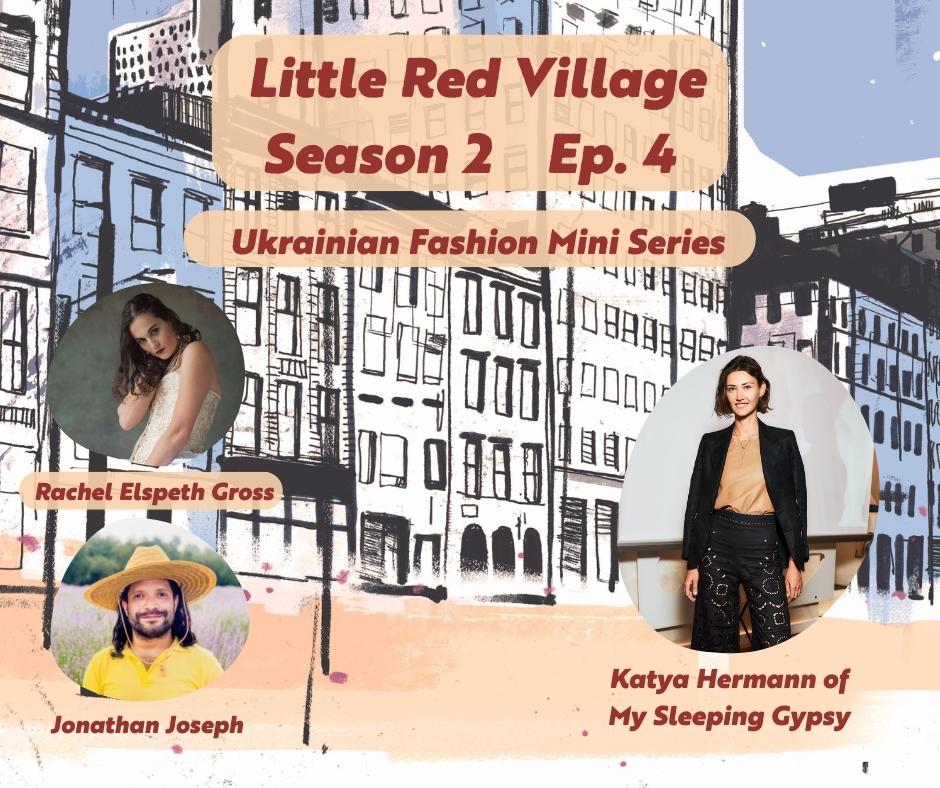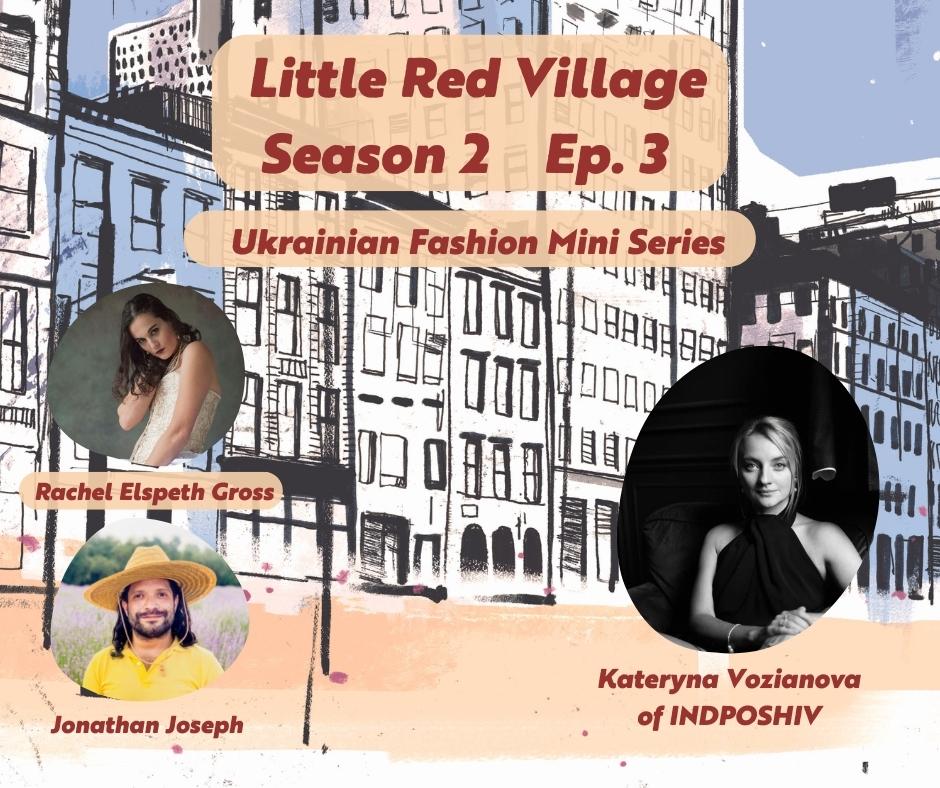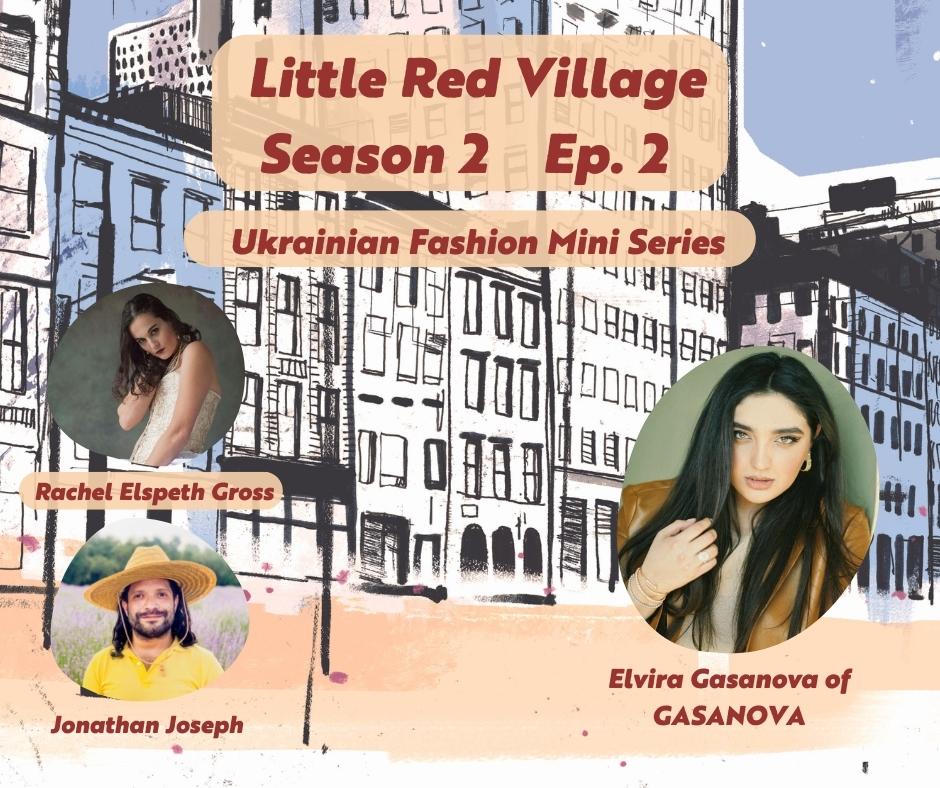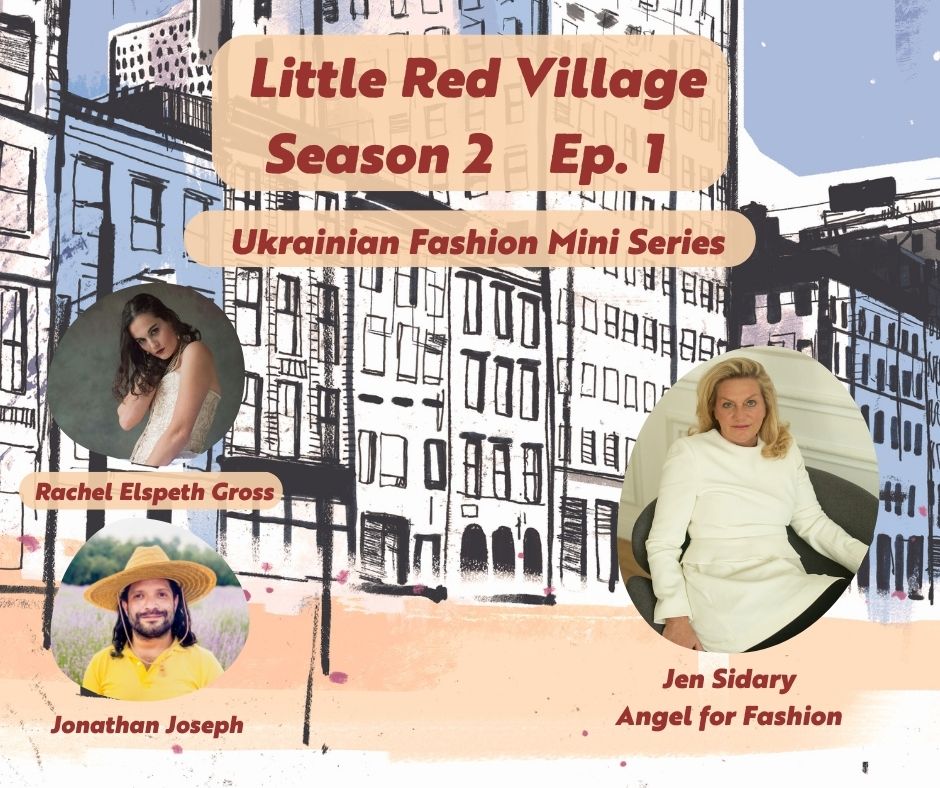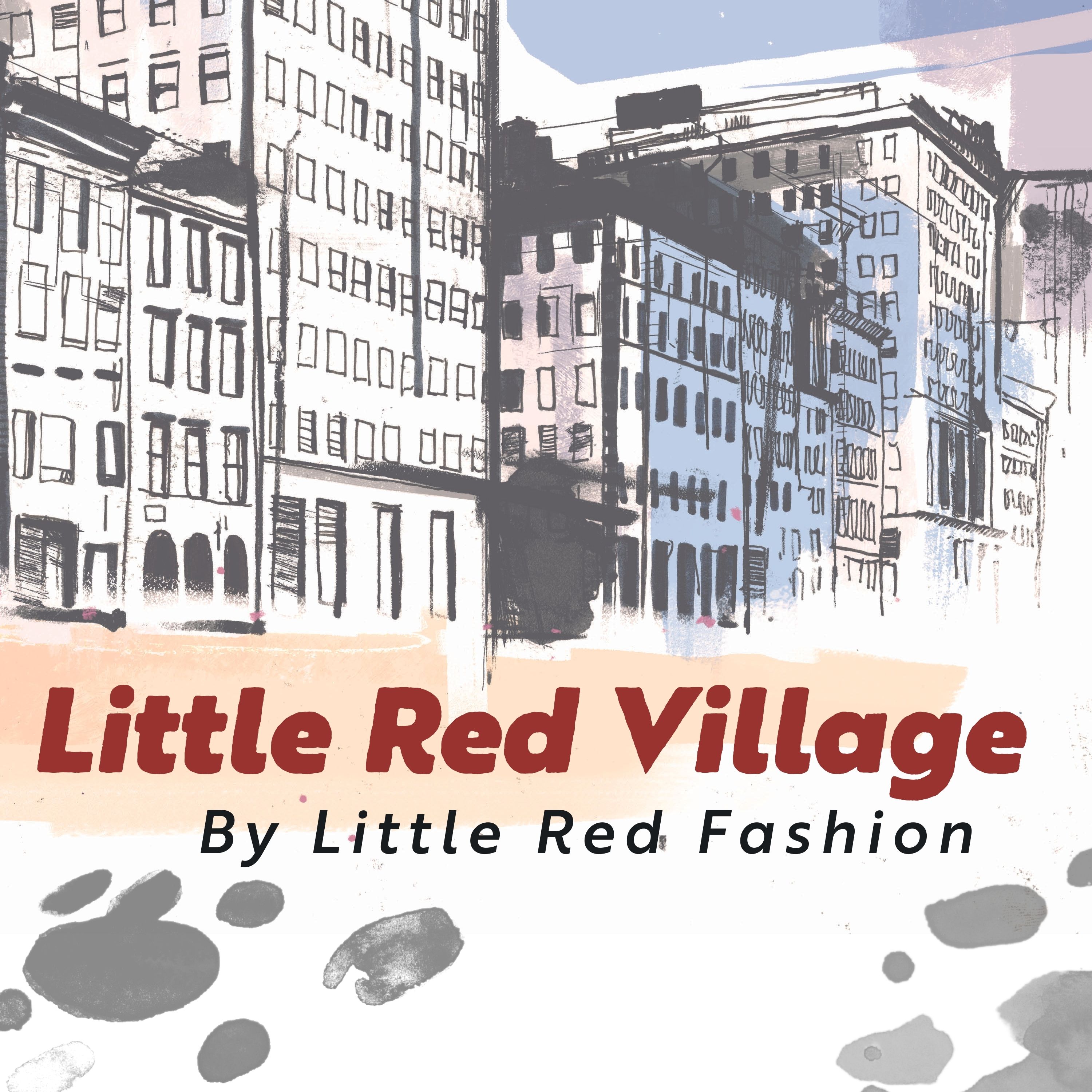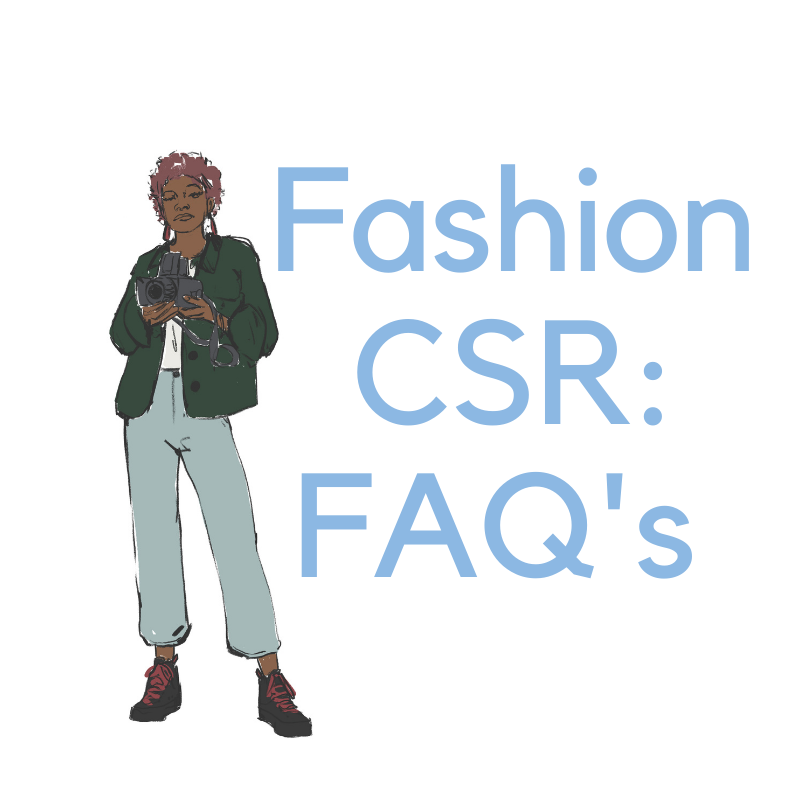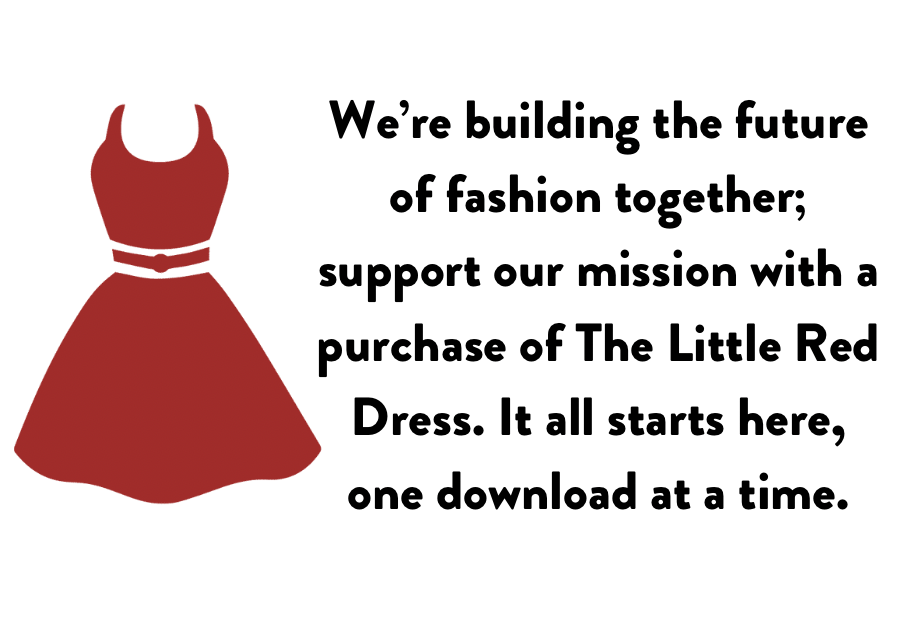Season 2 Ep. 7
Links to listen
Links to all other podcast platforms can be found here.
Speakers
Rachel Elspeth Gross (Host)
Jonathan Joseph (Host)
Henry Wilkinson (Guest)
Rachel Elspeth Gross 00:00
I don't remember if I found Henry Wilkinson on Instagram, or if he found me, but either way, when I understood what he was working on, I had to reach out and see if he would be willing to talk to Jonathan and me. Henry is a fashion historian who specializes in Givenchy and Audrey Hepburn. He's got this habit of finding, acquiring and then bringing back to life pieces from the house but of stories which might rival the women who wore them. Henry distinctly remembers as a child, being gifted physical copies of the classic films My Fair Lady and Breakfast at Tiffany's. For Henry, his early love of fashion is permanently entwined with Hepburn and Givenchy, although he will admit to a certain amount of Cecil Beaton 's influence. Two weeks into lockdown in the United Kingdom, Henry found to borrow his words, a tangible link to the Past, not many of us could see a listing for an early 1960s, Givenchy bodice plus maybe five inches of skirt and see something special but Henry did. And now he's completed the process of restoring what has turned out to be a significant one of a kind piece from more than 60 years ago. If that's not enough to impress you. After a ton of research. It turns out that the dress had originally been owned and worn by Lee Radziwill, Jackie o Sr. Now COVID projects saved a lot of us or helped a lot of us. And in many cases, those projects helped set the tone and the pace of the way we spent the past few years. Henry's dedication is a lovely example of how it was possible to persevere. even amidst the constant onslaught, that was the first year of COVID. Of course, most of us did not discover literal fashion treasure a few weeks into lockdown. But when Henry did, he took it further, and revived his discovery. And when he did, he made it into something more special than what he had found. And now it's years later. And Jonathan, and I get to introduce him and his work to you talk about what he's accomplished and how, what he's setting his sights on next. And personally, I can't wait to see what he does.
Rachel Elspeth Gross 02:31
Hey, everyone, we're back here with a new year and a new season of I can do that. We are here with Henry Wilkinson. And he has generously given us some of his time today to talk about some pretty incredible detective work, I guess. Maybe that's how I see it. You do some really incredible work with extant garments and surviving old couture from prior decades. How did you get into that?
Henry Wilkinson 02:55
It really started as a hobby, it wasn't ever something I thought that could fit into my work and my career. But I've always had, I think a love of restoring pieces. It all started with a love of clouds and the history of clouds. It started with an interest in costume and clouds on screen, mainly from film from the 1950s 60s, some into the 40s and 30s. But really what I would think most people consider the sort of Golden Age of Hollywood that was my gateway into vintage fashion. And I think fashion in general. So there was there's always just been this fascination for me with these pieces. And clothing is such a tangible link with the past, especially if there's a name or a face connected to these clothes. It could be a celebrity, or it could be your grandma from when she was young. It's such a tangible link to that person at that time. So that's how it started. Really, it was just this I found my grandma's wedding dress in her attic, which had been flooded. And so it was all stained. And there were a few tears. And I decided to restore that and make it look as it should. And that was probably my first restoration project.
Jonathan Joseph 04:12
Amazing.
Rachel Elspeth Gross 04:13
How old were you?
Henry Wilkinson 04:13
I was probably maybe 16 It's really cool. So yeah, that's sort of how it all started. It's all sort of snowballed from there.
Jonathan Joseph 04:22
Can you recall your first and earliest fashion memory was maybe from one of those bold movies those classics or what that early like this has caught my eye oh my god, I have the fashion bug now.
Henry Wilkinson 04:32
For me. It's always kind of embarrassing to admit, but it was I was seven years old. And I watched Titanic first time and I think that was the first moment when I understood the power of clothing on screen and just the power of clothing in general. I remember so distinctly being so sort of hypnotized by these clothes. I was so interested in them, not just because they were this part of history, but because I liked the look of them as well. And I didn't know until that point that it was someone's job to create those clothes and that this was a gateway into the past. And everyone was crying at the end of that film for very obvious reasons. But my seven year old self was just very upset that the nice clothes got wet now.
Jonathan Joseph 05:19
All the clothes were gone, absolutely, a true titanic tragedy.
Rachel Elspeth Gross 05:23
Especially that red dress oh my gosh, yeah.
Henry Wilkinson 05:25
So that was when I first I think discovered clothing on screen. I think that's more costume on screen. And it was because of that, that was then given a copy of my fair lady and Breakfast at Tiffany's, both Audrey Hepburn film because it was actually my family who gave it to me they knew at that point and understood that I loved clothes on screen and costume. And so they thought I would like those films. And that for me, even though it wasn't the first moment, it was the moment where the biggest impact for me was.....
Jonathan Joseph 05:57
That lightbulb that really big lightbulb moment.
Henry Wilkinson 05:59
Absolutely. It was seeing Audrey Hepburn wearing clothes by Chevelle she, and everything about it, for me just fit because it's the aesthetic with those two created is completely in keeping them fits in with my own. And that's when it all started for me was that was the biggest impact was watching those films.
Rachel Elspeth Gross 06:24
and what two films, and that's a pretty... I mean, Cecil Beaton at the other end of it like that's, obviously those are two great films for clothing. But when I was a kid, my mother was the librarian at the Beverly Hills Public Library. And there was like a reading room in the kids section where you could like Project stuff on the screen. So I used to go watch similar movies, I used to sit there by myself in the dark and watch. Oh my gosh, I love how to marry millionaires. Another one probably sound similar eras. That I mean, any movie, whether it's a fashion show,
Jonathan Joseph 06:50
for the 500th time, I will shut up The Women which was like a formative, formative formative movie for my fashion consciousness.
Henry Wilkinson 07:00
It is absolutely fantastic.
Rachel Elspeth Gross 07:02
Totally relatable. Yeah. So I see, I was looking at your information online, Henry. And I say you went to the royal Central School of Speech and Drama was that for like costume design was that the theater?
Henry Wilkinson 07:14
Yeah, that was for costume design. So that was always my career goal was to go into costume. And it's still a big passion of mine. And something I would choose to continue working in as well as what I'm doing now. But for me, it was costume always was so exciting to me, because it was this idea of fashion as creating clothes to be worn by everyone. And costume is creating clothes to be worn by one person. And it's a way of storytelling, which fed into those early films that I watched and understanding that the clothes were a part of that storytelling. And so I studied costume. It was from that moment, I decided I wanted to do costume and everything related to fashion and fashion history was more of a hobby to go with that feed into that career in costume. So I worked in costume for a while I graduated from my degree, I worked with Netflix on Bridgerton. So working in costume, and then the pandemic came along. And that's industry almost totally closed. I think so many people within the arts, regardless of whether it was in costume or any sector of the arts as a whole had to reevaluate what it was they could do in the meantime, while their whole industry closed. So I was really just looking for projects to keep me occupied. And that's when I found the the juvenile she dress that I then went on to restore and then turned out toLee Radziwill dress and the rest.
Rachel Elspeth Gross 08:50
I think I read some of that. But for our listeners, what would you you found it in a in the costume department? Is that correct?
Henry Wilkinson 08:57
I found it on eBay. Okay, all right places I found it on eBay. I was just scrolling through it. It was, I think the second week of lockdown of the first year in England, looking for something to do. And I collect jiashi pieces as well because again, it's that idea of being a tangible example of his work and everything that he achieved. And I came across this very sad, worn looking bodice, with about four inches of skirt left on it and the rest have been cut off and it was frayed and it didn't look in great condition. But the thing that stood out for me was the beadwork. It had this incredible embroidery and beadwork on it which just it just captured my imagination. And I heard from the seller that there was supposedly it once belonged to Jackie Kennedy. And I always take those kinds of stories with a pinch of salt because it's a lovely idea but realistically, in the collecting world, there are people who have stories just to boost the value and get more money. But I sort of decided that took it upon myself to make that my lockdown project, I had suddenly time on my hands and I wanted to restore this dress and make it Givenchy she originally intended. That's kind of my goal is to keep his work in this collective consciousness of of ours and keep it going. So I got it. And that's when period of almost a year of research started into this dress, which is the research is my favorite parts of, it was great.
Rachel Elspeth Gross 10:38
I completely and totally understand.
Henry Wilkinson 10:40
I just lose myself in research, I love it. And I can go through 1000s of photos and little newspaper magazine articles. And so for a large amount of time I was researching Jackie Kennedy and her connection with Givenchy. She and Givenchy was one of her favorite designers. But as the first lady, she wasn't really permitted to wear anything other than American design, she was there to sort of celebrate and represent American design. And so a huge portion of her wardrobe were copies of Parisien designs made by Oleg Cassini. And so I spent a lot of time looking into that and trying to see if trawl through 1000s of photos of Jackie Kennedy trying to find any of her with this, wearing this embroidery or something like that. And that then consequently led me on to learn more about her sister Lee Radziwill, who was also a big client of Shiva she, until 1962, when the two had quite a public falling out, which is a very interesting story to read about. But I decided yeah, I looked more into Lee's wardrobe as well, because I thought, well, it's still got a Jackie Kennedy connection. And I was sharing this process along the way on social media. And then a few months later, a follower sent me a photo of Lee Radziwill while wearing the GFRC dress that I was restoring was a very exciting. It was crazy, because it was that moment that I realized that that connection that I was told about in passing was true and that suddenly this piece was so much more than just just as you actually dress, which was important enough to me, but then you suddenly had this context of who wore it. And then it sort of led on to finding out okay, well, we knew that Lee Radziwill wore the same design. But how do we know that this dress is hers? And that for that I just used my understanding of Jeevan she as a designer, because at this point I've been researching and specializing in his work for over a decade.
Rachel Elspeth Gross 12:55
Didn't you work in his archive?
Henry Wilkinson 12:56
Yeah, so I've worked in the Shivaji archives in 2019. And they invited me over to Paris to go work in their archives for a little bit because they sort of understood that I had this knowledge of Jeevan sheen, his work and and it was quickly becoming part of my work as in fashion history is specializing in Givenchy. And so it was with that and also the consulting the archives with this Lee Radziwill dress that we found out that only one of these dresses was made, which meant that the one that I was, I was storing was worn by Lee and the story is still evolving. I had a follow up about three weeks ago, maybe send me a photograph of a book that they were reading, which I think was just about interiors. And in one of the photos on a mannequin staging in this interiors was the dress, the story keeps evolving. I found out the dress was sold in in the 90s at auction and before that was sold in the 60s by Lee Radziwill. So it's still evolving. It's I'm still finding out more about this dress, but it's it's still so exciting all this research and finding out more
Rachel Elspeth Gross 14:09
The part where the skirt was chopped off. I'm assuming that's all I know because of your stuff. But would you tell our audience about how you went about dealing with that particular challenge?
Henry Wilkinson 14:20
Yeah, so that was the most glaring difficulty with the restoration. Thankfully the the beadwork and embroidery was all remarkably intact. There was fading to the beading, especially looking at photos of the dress 20 years ago when it's sold at auction, the color was much more vibrant. I have a slight suspicion that someone tried maybe cleaning the dress, maybe it could be dry cleaning or even a washing machine the state that it was in so a lot of that color was lost from the bodice but it must have damaged the skirt. beyond repair. Were these recording in the previous owners view but that was big Hawes, it was made from a fabric called Silk sibylline, which I had never worked with before until I came across this dress. And that was a part of the process was trying to determine what the fabric was so that I could recreate it as best I could. But something I found with the silk sibylline is that if you get any kind of crease in it if you lean on it and get a crease, or if you fold in the wrong way, that will scar that mark. And it's so difficult to get that mark out of the fabric. Part of me wonders whether that was why someone cut the skirt off, because they tried, they'd scarred the skirt with all these creases in these lines. And so that decision was to cut it off. But to recreate it, I found a matching sibylline that was just in an ivory color, it was in a plain ivory color, and scouring the market for for color match that could be identical. But I just couldn't find anything. It's this really interesting, I call it rose gold, because it looks pink in some lights and like this deep creamy gold and some other lights. So I decided that the best course of action would be to dye some plain fabric to match the original. And for that I collaborated with a wonderful textile conservator, my friend Sarah. She's helped me with some of my pieces before. And together, we made samples and different dye baths to try and find a color match until we found one that worked. And then once we had the fabric, I could then take that and recreate the skirt using the fragments of the fabric that I had. But also what was great is that I had pieces in my collection that I could use to try and piece together all the missing pieces. And so I finished the skirt. And it was only after I'd finished the skirt that I then found photos of Lee Radziwill wearing it full length photos. And thankfully it looks the same.
Rachel Elspeth Gross 17:09
Awesome! That's so cool.
Henry Wilkinson 17:12
No, I haven't seen a photo of it at all throughout this process. So I didn't know whether the skirt was short or the skirt was long, and what kind of length it was. And so the decision I made was if I make it full length, like it's an evening gown, then worse comes to worse I find a photo of her wearing and it short and then shorten it but I can't do the opposite. So thankfully, when we did find the photo, it was the full length evening gown. So that worked out well in the end.
Rachel Elspeth Gross 17:38
Yeah, what I was going to ask I'm sorry, I kind of think makes me like a child, when you were saying that you had pieces in your own collection that you were able to use as references that like pieces from the same year or similar styles. And you were able to just not just I don't mean to minimize that obviously, work, but kind of like Intuit how what was supposed to go where, and then like that.
Henry Wilkinson 17:59
I mean, I didn't know at that point, what exactly the year was that the piece was made, but from what I knew it was eventually in the style of the dress, my guess from 1962. And so I was using pieces from my collection from that time period. And Givenchy used a lot of construction methods that, for me is a great indicator as to whether a piece is authentic or not the sort of little signature things that he would do. And so being able to replicate that, but I had a couple of pieces in my collection, one from 1960 and one from 1962 that I used just to look at the construction methods and see that they were flat line with silk organza which is something that he did quite often because he said that it gave the pieces tenue which is body and given body and structure so that they would lie smoothly and and hold their form. And so that was what I read replicated on the skirt that I did as well and hadn't finished all the seams by hand, just all these little little finishing details. But having those pieces just as reference was invaluable. Research really, and just part of the process that is just so exciting for me.
Jonathan Joseph 19:14
Having that it would be impossible to recreate something like that. Not that basically blindly without that working knowledge of those signature elements. I mean, I think that's a wonderful, the fact that you didn't get the image until after the fact I think is a testament not only obviously to your skill and depth of knowledge, but I think the importance of just a combination of ingenuity and tenacity, which is something we always talk about here on these these interviews because for kids especially that want to get into fashion history, restoration, potentially costuming, we always tend to have this conversation about the fact finding peace and that being an adventurer of fashion is doing exactly what you've done and using those references to amalgamate you know, a solution.
Henry Wilkinson 19:57
Definitely, I think that was one Part of the process for me, but also the most exciting thing was being not leaving any surface unturned and looking into everything. And that idea of tenacity, which I once got told that I was tenacious as a negative a few years ago. And I really took it to heart and I felt so sad that someone bado could be tenacious. But now I kind of take it as a compliment, because it's like, yeah, I just keep going until I can find an answer. It's, it's important with this kind of, I guess you could call it detective work. It's all part of that. It's, it's all the fun of it.
Jonathan Joseph 20:33
I would imagine that a background in costuming just by nature of the craft was extremely beneficial in that because, you know, I've heard many customers say, for example, that the detective work is half the battle, whether you're trying to age a textile that's new to look like it's old, whether again, the serial dye baths to get that proper rosegold effect. I mean, I think the science part of it, and that you're going through trial and error is also essential. And it's also something I think our younger listeners should take to heart like you got to experiment, in the words of the magic school bus, you got to take chances, you got to get messy.
Henry Wilkinson 21:08
Definitely. And I always wanted to do with costume I wanted to design. But I deliberately chose to do a course that almost exclusively focused on construction, and making because for me, it was so important to understand how these pieces and costumes would be made. So that I could design them. Well, I knew if I could, if I had that understanding of how they would be made, then, when I was designing these pieces, I would at least have a basic understanding of how they would come from sketch into into real life. It's not the method that everyone chooses. But it was, it's one that I still, I still stand by, I think I really enjoyed being able to learn, not just how to design but also how to make as well.
Rachel Elspeth Gross 21:58
it appeals to me. And I completely understand. And I think one of the differences between apparel design and costume design, like you said, it's, you know, for one person versus, you know, a whole market or demographic or whatever. But it's also about making something for the stage doesn't have to be where the screen doesn't have to be exactly perfect. It just needs to look right, and how better to know how to make it look right than to understand how the garment was actually constructed. I mean, that makes perfect sense to me. Sounds like so much fun. I mean, the stories, this is something that Jonathan and I come back to all the time, is how much we appreciate and how important the stories are. I was just taking notes here about what you've been saying. And I'm realizing like, yes, the dress was important, just because it was Givenchy. And then it was important because of Lee wearing it. And it's like your story is kind of added to that. And he has a further legacy, if that makes sense. Because now this whole generation of people who maybe would have never even known who he was, that's a through line. And that's such a cool thing. I hope you're very proud of yourself. I'm a mom.
Henry Wilkinson 23:01
I'm very proud of the of the project. And just being able to bring that story to light and the idea that the time I've had with it and to restore it is now part of its history. And it's so interesting to me, it's one of those stories that you know, you sometimes hear there's things of these incredible, like 1950s deals that were saved from dumpsters or something is the things that you can't quite believe. But it's such an exciting and interesting part of their story to look at how can something that was considered like the height of French couture suddenly be thrown in a dumpster, only to be saved at the last minute. And it's so interesting to me, that that's kind of been some of the other pieces that I've found in my collection is there's been similar things and it's so exciting to me to be able to uncover know that part of their history and adds to the history, I guess.
Jonathan Joseph 23:56
It does, I mean, the act of preservation and restoration is what allows that bridge from the past to be built to the future. And I think too often in the world of for those outside the world of fashion or whatever, however you want to define that. It's often difficult for people to see that through line or see that bridge or understand why that bridge is important. And I think your story really drives home, especially through the material science part of it in terms of why would the script be cut off in the first place? Oh, because the silk is extremely delicate. And these textile sciences come to bear not only on that, you know from that angle, but also in those serial dye baths in how you had to work to recreate something and I think all of those things encompass exactly why we at Little Red Fashion do what we do in trying to show people who may not be within the world of fashion but have kids that want to be don't have answers to all these questions to be able to see that fashion isn't just a pretty dress on a hanger or a mannequin or in a photo. It combines so many different skill sets, paths specialties and that in intersection is where the magic actually happens.
Rachel Elspeth Gross 25:03
A lot of magic, so we're okay, then you might not know the answer. So forgive me. What's, where's the dress going to go? What's the ultimate goal with it?
Henry Wilkinson 25:12
I don't know.
Rachel Elspeth Gross 25:14
No. And that's fine. I completely undersatand.
Henry Wilkinson 25:17
What I'm finding out about always finding information constantly as part of being a fashion historian is everyday finding out something new because some things with a skirt that I've recreated that I wanted to go back and change first. And it's always a learning experience. So I feel like I haven't quite perfected it just yet enough to let it go. But yeah. But something that is incredibly important to me is that now that this piece, although it was almost lost, now that it has come back to life, I guess it's it's so important to me that it stays that way. And I would love to see ago in a museum collection, or maybe even back in the States, you know, it's such a big part of history as well, because it's a dress that she wore as part of the presidential tour around Europe as well. And so I haven't quite decided yet, but I would want to ensure that it was going to a good home first.
Rachel Elspeth Gross 26:13
A forever home.
Henry Wilkinson 26:14
Yeah. Yeah.
Rachel Elspeth Gross 26:16
But when you write a book about it, please tell me so I can buy it.
Jonathan Joseph 26:21
That's wonderful. I mean, the future I think, as you're talking about the home for this dress, I immediately went being the tech founder nerd that I am, you know, 3d scan it, get it into the metaverse put it, you know, digitally preserve it as well, you know, outside of being an extant garment. I'm a very big proponent of digital art composition, because I think, on the one hand, it's important to, obviously preserve the extant garment, especially after the journey that this one in particular has had. But I also think the idea of digitizing certain elements of collections is really important to get younger people involved because they're digitally native now. And so just putting that on your radar. I'm not saying we're not saying that that's something we're working on at Little Red Fashion, rose gold, rose red, saying, yeah.
Henry Wilkinson 27:09
I have thought of maybe like taking a pattern from the dress of it and digitizing that so that there's sort of DNA that construction, the foundation of the dresses, is preserved. But no, like,
Jonathan Joseph 27:20
I can't, I can't speak for FIT. But I know that have a digital garment scanning setup.
Henry Wilkinson 27:24
Yeah, I've not actually thought of that. But it's I think you're absolutely right technology is and the world of the digital is changing the way that we can document and create archives and in the sense that not too long ago, in the field that I do is as a fashion historian specializing in Givenchy, she I would have bookshelves with folders filled with printed images or magazines of his work, and now they're all digitized. They're all in files for me to look at.
Jonathan Joseph 27:56
Absolutely. I mean, that's something we're passionate about here
Henry Wilkinson 27:59
The piece is old fashioned now, like it's gonna keep going.
Jonathan Joseph 28:03
Yeah, I mean, that's something I'm personally extremely passionate about, and that our advisors and I are really working hard on is putting together things like Digital 3d Fashion museums that scan garments, and put together these kinds of future thinking, archives and treasure troves really to make these things more accessible, and to make them more interactive as well.
Henry Wilkinson 28:23
Yeah.
Jonathan Joseph 28:24
Without having to touch the garments like that, right. That's the fashion history. Like, you want to explore these garments. But you've been just mounting it is putting it through stress as a textile.
Henry Wilkinson 28:34
Absolutely.
Rachel Elspeth Gross 28:35
And the light. Yeah, yeah. So what you just said about the archive and keeping things more digital made me think of books and how I cannot stop buying them last year, Jonathan, whatever our individual budgets were for books they were gone. Is there a particular Givenchy that you like, or is there a particular fashion history books that you would think.
Henry Wilkinson 28:53
With Givenchy its unfortunately, there aren't a huge number of accessible books about him, which is something I hope to change. In the future. There have been books published about him, majority of them are out of print, or they're purely, they'll make coffee table books, they're just photographs and don't get me wrong. That's also a fantastic way of learning visually is looking at photographs, the most comprehensive and I think the only official biography of Givenchy, you can still get it is all in French. I actually think I have it developed as you can see, by Jean-Noël Liaut And it is it is a very comprehensive book that Givenchy did interviews for, he was a very private man, but as I say it is all in French, so not perhaps as accessible to as many people but in terms of books that aren't necessarily focused on Givenchy, she will have a couple can I name two.
Jonathan Joseph 29:53
You can name it as many as you would like our ever expanding.
Henry Wilkinson 29:58
I'm halfway through reading at the minute that I'm really loving is, look at my desk theres books everywhere, is The Battle of Versailles.
Jonathan Joseph 30:07
Oh, Robin Givhan love that yes, absolutely phenomenal stick. It is one of my favorites. I just wrote for a third grade reading and literacy exercise for our workbook to accompany the little red dress an entire exercise about the Battle of Versailles. Actually a reading comprehension exercise that talks about the The Battle of Versailles, I have to look forward to right.
Henry Wilkinson 30:32
As I say, I'm halfway through but I'm loving it. It has that connection to you from she as well that piqued my interest. But just this whole evening, in that moment in fashion history, and the way it's written, I think is brilliant. It offers such a great contextualization of every designer that was there that night. And the reason it was so significant. So yeah, that was one of them.
Rachel Elspeth Gross 30:54
Such a talented writer. Yeah,
Jonathan Joseph 30:57
yes. The Battle of Versailles, your third grader can learn about simple sentences, independent clauses and compound sentences.
Henry Wilkinson 31:06
Jeez I wish I had that kind of education.
Jonathan Joseph 31:09
Just making the things that 10 year old me really, really wanted. It's like the
Henry Wilkinson 31:12
So Battle of Versailles one that I'm loving another one. I don't know if either of you have managed to get your hands on a copy of this yet. It's a new book about Rébé the embroiderer. It was written by my lovely friend Nadia Albertini. And again, I will say that my addition is French. This is the first version but I believe it's potentially being translated. But Rébé, it was one of the greatest embroideries and beaders of mid 20th century haute couture, same level as Lesage. But I think often overlooked, I think it just it's got lots of great tests, but also these incredible up close photographs of the embroidery. So she's not only found the original embroidery samples from but also match them to the dresses that they were made to into by Dior, Balmain, Givenchy, Yves Saint Laurent, its got samples of the shoes by Roger Vivier. Even if you don't understand French, and seeing these up close photographs of it's got archival photographs from the Givenchy archives. Oh my goodness, it's fantastic. She's done a brilliant job. I've loved flicking through that as well.
Henry Wilkinson 31:12
Yeah, that's going on my list.
Henry Wilkinson 31:29
Yeah I was just thinking the same thing, its happening Immediately. I love that. There's all of these houses that don't have the same name recognition as Chanel or whoever, but have been making the detailed work that we all see on these runways that we all loved and are obsessed over. And I mean, massage definitely so many. Oh, I'm so glad that there is an initiative in place to make sure that that type of craft work, artisanal craft work dedicated, just a whole house of pleats. I mean.
Jonathan Joseph 33:08
where would fashion be without the Métier right?
Henry Wilkinson 33:10
It would just be paper.
Jonathan Joseph 33:15
Perish the thought. That's terrifying. Well, wonderful.
Rachel Elspeth Gross 33:18
This has been lovely. I can't tell you. I appreciate it.
Henry Wilkinson 33:21
No, absolutely its been a pleasure.
Jonathan Joseph 33:22
Yes. Thank you so much for joining us. I think this was such an expensive interview for our listeners, I'm really excited to get it out to them. And I'm so thankful because I think what you're doing is so important in terms of again, bridging that gap between the past the present and the future, through your craft and through your own two hands. It's something that I think again, is so expansive, especially for young people that are interested in getting into the field in whatever capacity doesn't even matter if it's costuming, restoration, archive, archival sciences, any of that. I think just again, back to that tenacity word. That's something we're really trying to instill in the future. You know, movers, shakers, lovers of fashion and the industry itself. That's how the industry moves forward and how we keep these things alive, which is so so important. So thank you so much for joining us on this episode of I can do that part of our Little Red Village initiative and welcome to our newest Little Red Village errs. Thank you so much.
Henry Wilkinson 34:18
Thank you so much, you guys. It's been so lovely to talk with you.
